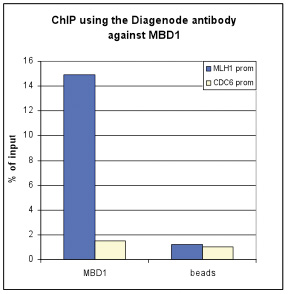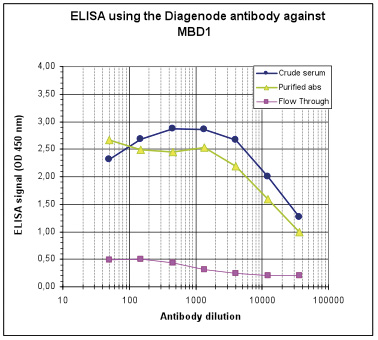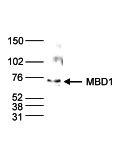MBD1 (UniProt/Swiss-Prot entry Q9UIS9) is a transcriptional repressor that specifically binds to methylated CpG dinucleotides in promoter sequences. MBD1 acts by recruiting a variety of histone deacetylases (HDAC’s) and chromatin remodelling factors. MBD1-dependent transcriptional repression is mediated by ATF7IP through the recruitment of factors such as the histone methyltransferase SETDB1. MBD1 probably forms a complex with SETDB1 and ATF7IP which couples DNA methylation to H3K9 trimethylation and represses transcription.




